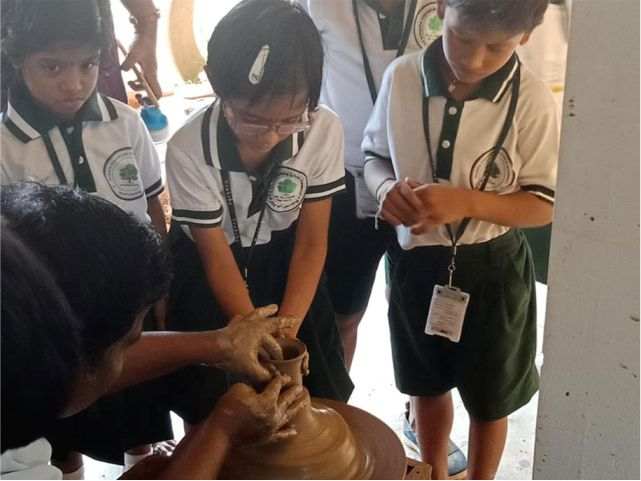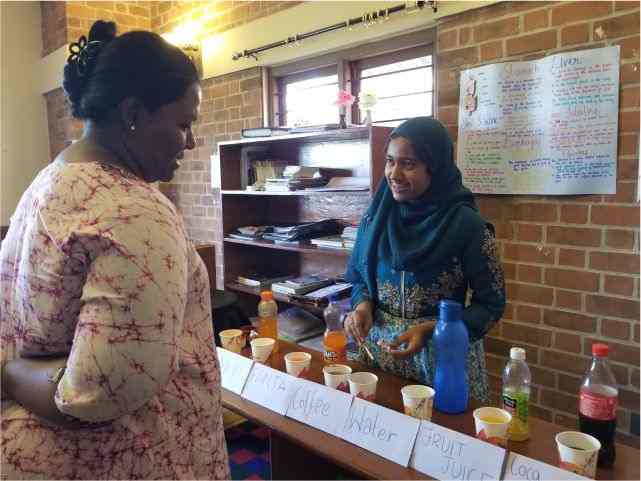Montessori Elementary
Building the Genius in Your Child
““The secret of good teaching is to regard the child’s intelligence as a fertile field in which seeds may be sown, to grow under the heat of flaming imagination. Our aim therefore is not merely to make the child understand, and still less to force him to memorize, but so to touch his imagination as to enthuse him to his inmost core. We do not want complacent pupils, but eager ones.”
by Dr. Maria Montessori E Elementary School hosts children of ages six and above.
Around age six, children graduate from the Montessori
Primary class into elementary school. Children change both physically (e.g.,the first permanent
teeth come in), socially (e.g., a marked eagerness to work in groups versus individually;
children become more social), and intellectually (e.g., they are able to grasp more abstract
ideas, and become interested in the whys of things, as well as in fairness). Dr. Montessori
described this as children entering a new plane of development.
Naturally, as the child matures and changes, so does an educational program tailored to the child’s
needs.
Dr. Montessori, as a doctor, and a pioneer in early education, recognized the critical importance of
childhood learning. She spent many decades creating “The Montessori Method”, an integrated program
tailored to meet the developmental needs of young children. The essential purpose of a Montessori education
is to offer each child an environment in which he can develop the skills and habits he needs for a lifetime
of learning and happiness.
Montessori Elementary is designed to fully engage 6 -12 year olds in learning to leverage
their sociability, their curiosity, and their drive to contribute to their community so they can
acquire the skills and knowledge they need to flourish in life.
Montessori Elementary is a great environment for most children! We invite you to schedule a tour or observation—and you’ll instantly see just how different Montessori is, and why our students love it here!
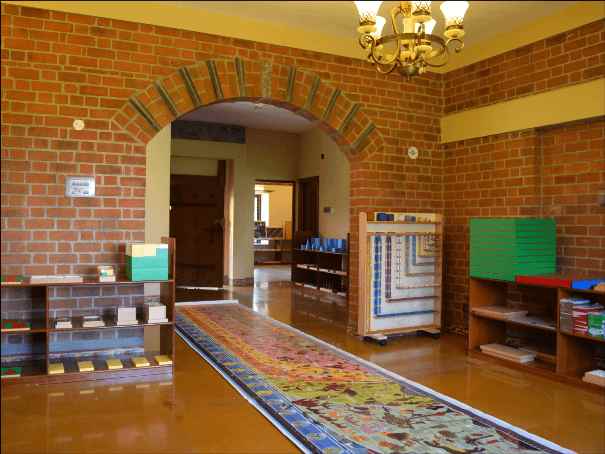
Why Parents Choose Vruksha's Elementary?
Individualized attention with low student-teacher ratios
With a 1:12 (Lower Elementary) or 1:15 (Upper Elementary) or better teacher-to-student ratio, our teachers are able to get to know each child well.

Outstanding foundational skills in language arts and math
Developed with engaging, hands-on materials that progress from concrete to abstract, and enable children to learn joyfully and to truly understand and master skills.

Learning tailored to optimally challenge each child at his/her ability level
Montessori teachers rarely teach to the whole class. Instead, they give lessons to small groups based on ability, readiness, and interest. This means that each child is constantly challenged at just the right level. A 2nd grader who is advanced in math may join a group of 3rd graders; if she struggles with reading, she may also join a group of 1st graders in literature circles. As all the instructions are individualized, and with a three-year age mix (1st – 3rd grade, and 4th – 6th are in one mixed-age community), children don’t compare themselves against others as much, and instead focus on their own personal goals and development.
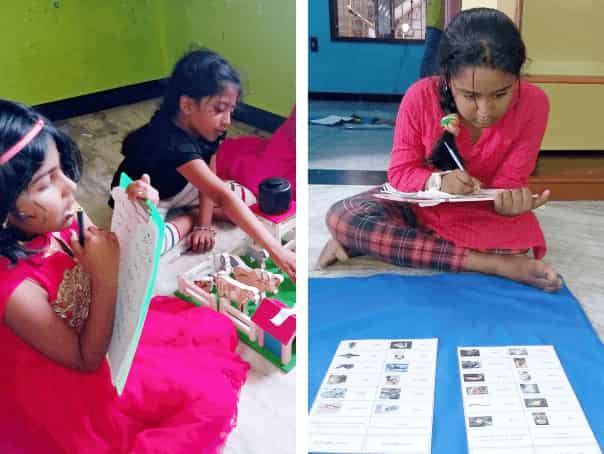
A continuation of authentic Montessori into the elementary years
Many parents whose children are graduating from a Montessori Primary program choose Vruksha – International School of Montessori to be able to continue seamlessly with what works for their child into the elementary years, instead of switching to traditional schooling.

A rich curriculum beyond the literacy and math focus
Dictated by standardized testing, Montessori offers a rich curriculum in science, geography, cultural subjects, and history, with art and music integrated into the life of the classroom community, starting in the lower elementary years, when some other schools spend the vast majority of teaching time focused on the basic literacy and math skills measured by standardized tests. Enrichment opportunities include field trips and child-led Going Outs for the older children.

Family and child-friendly schedules and limited homework
Our students have five instructional hours per day (three in the morning, two in the afternoon). Lessons and practice happen at school, so homework can be limited without sacrificing academic progress.
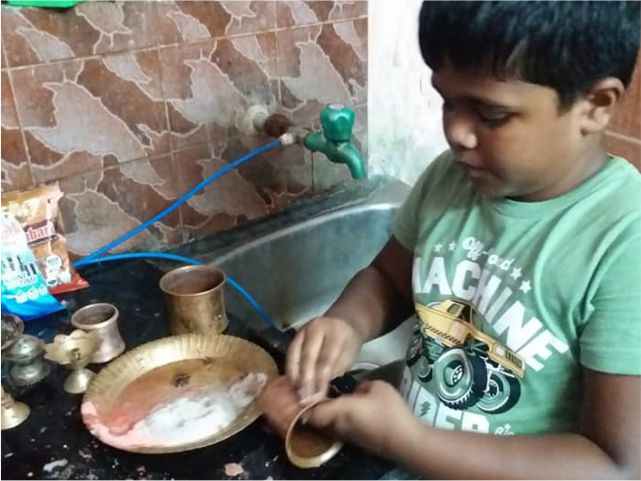
Joyful learning, motivated by interest, not rewards
Montessori children learn because they enjoy learning because they delight in new knowledge, or love mastering new skills, or get motivated by seeing older children in class do challenging work. We don’t do letter grades, and we only conduct formal assessments twice yearly for students in third grade and beyond which helps keep motivation where it needs to be, within the child. Just observe any Montessori elementary class, and you’ll see children engaged, on task without extrinsic incentives like grades or sticker charts that may work in the near-term but that all too often lead to the “will this be on the test” attitude by middle school.

A community of like-minded families
Our schools reflect their neighbourhoods, with families of many ethnicities and religious beliefs. Yet parents find that within their Montessori community, they are able to connect with people who share similar parenting styles, and who all value the investment of a great education for their children. Regular community events at school, frequent communications between teachers and parents, and an open door policy inviting parents to observe in class contribute to the community feel.

Montessori Elementary - Quick Facts

1. Low ratios, to support individualized attention for each child
A 1:12 or better teacher-to-student ratio in Lower Elementary, and 1:15 or better in Upper Elementary. Classes start small in newer programs, and expand over time, typically reaching 25-30 students, with teachers added as enrollment grows.

2. Montessori-trained Teachers for each level
With us learning happens at each child’s individual pace with teachers in different levels assiting them appropriately where as normal schools have the practice of herding children from one adult-led activity to the next.
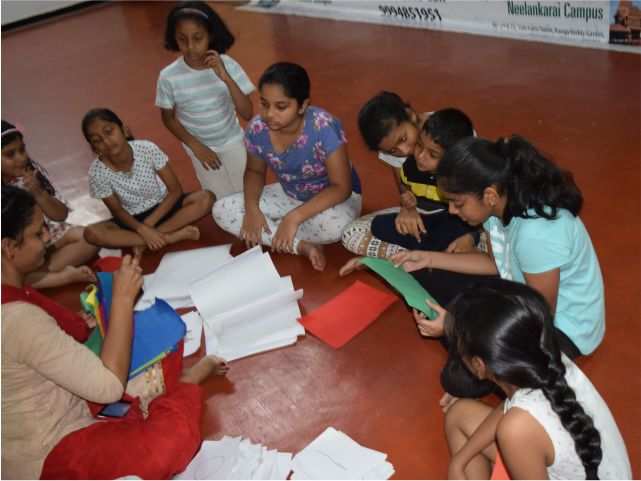
3. Mixed-age classroom communities
Two mixed-age group levels:
Lower Elementary: 1st – 3rd grade, ages 6-9
Upper Elementary: 4th – 6th grade, ages 9-12

4. Five hours of instructional time daily, plus optional extended care
Core academic day from 8:30am – 3pm Extended care available for early mornings and until 6pm Optional after-school enrichment programs, tailored to each school community

5. Limited homework assignments, with practice built into the school day
Homework is limited (typically around one hour/week in Lower Elementary) as children have ample time to practice at school. Our goal is to leave afternoons and weekends free for family time and to pursue children’s passions without sacrificing sleep.

6. Authentic assessment, focused on student growth
No letter grades or grading on a curve; only one standardized test per year, starting in 3rd grade. Detailed rubric-based semi-annual progress reports, student portfolios, and regular communications via the online student records system.
To Read More about Montessori education and its Outcome Click Here
How it Differs?
Comparison of Montessori Elementary with Traditional Elementary Schooling
At Vruksha – International School of MontessoriThere are many advantages for children with respect to various focus areas of education as listed below.
| Vruksha Montessori Elementary | Traditional Elementary |
|---|---|
| Classroom look & feel | |
| A home-like feel: Wooden shelves separate the space; work tables with 2-4 chairs and rugs on the floor; plants, art in a zen-like, calming look. | Desk in an otherwise open classroom, with a white board up front. Decorations in primary colors, a busy look. |
| Grouping of children | |
| Mixed-age communities, like real-life. General age ranges of 6-9 for Lower Elementary and 10-12 for Upper Elementarybut younger or older children may be present, based on maturity and ability. | Single-age groupings, generally with rigid age cut-offs (e.g., must be 6 by September 1st to enter 1st grade). |
| Schedule | |
| Two long work periods, of three hours in the morning, and two in the afternoon. Children receive lessons and apply and practice what they learn in class. Time to complete work, to work at one’s own pace, without interruptions. | Fixed schedule, with all children participating in a given subject for a pre-set time (typically an hour or less), then moving on to the next subject. Adult-directed, often tightly-timed transitions, multiple times each day. |
| Motivation | |
| Mainly intrinsic motivation, built on each child’s interest, on curiosity, on making content relevant and engaging, on the joy of mastery, on the natural desire of younger children to do the work they see admired older children do in class. Authentic assessments via portfolios and rubrics-based progress reports. | More emphasis on extrinsic motivation by grades, sticker charts, green-yellow-red behavior charts, etc.Assessments via graded tests, standardized testing several times per year, and report cards with letter grades. |
| Role of Teachers | |
| Teachers act as guides. Sometimes, it takes a minute to spot them in class! They sit with small groups of children for lessons, check in with those working on practicing, and coach older children who take an active role in leading and managing the community (such as facilitating class meetings). | Teachers have a leading role. They often stand while children sit, and are very visible. They direct the learning, calling on children, and moving the class from one subject to the next. |
| Role of Children | |
| Children are active community members. They plan their work, and take responsibility for getting it done. They help each other peer teaching and mentoring are common and encouraged; working together is welcome and not cheating. They take responsibility for solving classroom problems e.g., by discussing issues in a weekly community meeting and proposing solutions. | Children are generally expected to listen, to pay attention, and to follow the teacher’s direction. They have limited say in where they learn, with whom, what, and when. |
| Curriculum approach | |
| A sequential, clearly-structured curriculum, often embedded in hands-on materials that move slowly from concrete to abstract over the course of elementary. A balance between foundation skills and rich content in science, geography, history, and the arts. Children move through curriculum at different paces and have options on which areas to explore deeper, and on what subject matter to practice skills (e.g., what to research, write about, read). | A set of standards set by standardized testing and a curriculum defined by textbooks adopted by the school, and supported by worksheets and other materials used in class and for homework. Limited freedom of choice for either children or teachers in tailoring content or pace of teaching to the needs of individual students. |
| Educational goals and standards | |
| Enabling children to acquire Knowledge for Lifethe essential knowledge, thinking skills and strength of character children need to flourish as joyful children today, and as successful adults tomorrow. | College and career readiness. Achieving annual progress on standardized tests used to measure students’ and schools’ achievements. |
Vruksha® Montessori Elementary Curriculum
Literature and Language Arts
Our goal is to graduate students who have become proficient in the basic
process of writing. We teach neat, fluent handwriting (especially to students who join us
from outside, without Montessori Primary experience). Our students practice cursive writing
from day one (as against the common public school practice of teaching block letters,
and then re-training students to cursive in grade 3). As students start writing sentences,
we introduce the mechanics of punctuation, capitalization, where to place sentences on the page,
and how to construct well-written paragraphs.
Mathematics
In Lower Elementary, children typically work on new concepts with a
wide range of scientifically designed Montessori materials. Over time, by Upper Elementary,
children begin to “let go of the materials” and move into abstract understanding of how
numbers work. At its heart, our elementary mathematics program is about flexibility and
fluency with numbers. We want children to visualize patterns, develop number sense,
think critically and logically, and propose solution paths that others can see,
discuss and critique. It is these core cognitive skills that will aid children in
many areas of their adult lives.
Science
We want our students to internalize the view that the world out there is a fascinating, relevant topic worthy of their interest and attention. We build upon our student’s innate curiosity about the world, enabling them to explore topics that interest them and discovering answers that are personally meaningful. From the beginning, science is a tool for them to satisfy their desire to understand the world. It is practical and useful; it is interesting and rewarding; and it is a subject they enjoy and are eager to pursue.
Read More..History and Geography
By Upper Elementary, children study history in its logical sequence, progressing from prehistory through ancient history toward the present. This sequence is taught as an exciting story, with a focus on the broad arc of history and essential events, told to groups of children. Children then have the opportunity to independently dive deeper into a culture, an event, or a historical figure as part of their follow-on work. This approach ensures that all children understand how human society developed over time, and the key events that shaped human history, while also engaging their motivation by providing autonomy on researching and presenting specific details.
Read More..Arts and Excursions
The Arts Curriculum involves Crafts, Construction, Carvings, Ancient Art, Painting,
Drawing, Culinary Art, Sewing Art, Performing Arts which include Music, Drama and Theatre.
The art curriculum becomes a medium of expression in their academic work that requires
various artistic skills to describe elements of Cosmic Curriculum. Study excursions are
often taken by the children to go to places and learn subjects in real world according
to the needs of the cosmic curriculum.
Soft Skills
The difference between a young adult who flourishes, and one who flounders,
is often a difference in soft skills and not in academic achievement or test
scores. The Montessori Elementary curriculum fulfills this need by providing
children the opportunity to develop their scope of executive functioning,
personal and social skills—in a carefully-prepared environment, and with
individualized support and coaching by their Montessori teachers.
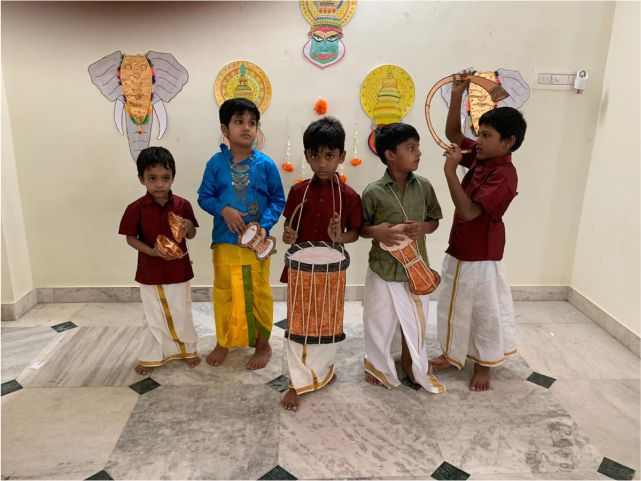
Music - Montessori Mozart
Music in Lower Elementary is often centered around singing. Teachers may teach a
variety of songs, or may even work with their class to put on short musical performances.
Continuing their primary music experience children can learn about scales and musical notations.
By learning about rhythmic and melodic notation on a variety of instruments, interested students
can learn to compose their own songs, and may even put on performances in small ensembles.
Not limiting to just play existing music, the 9-12 year child create their own plays to
their interests and strength.

Cognitive Sports
Cognitive sports activities in our school are used to improve upon the various
psychological factors known to contribute to successful child’s performance,
such as mindset, self-efficacy, self-confidence, motivation, and mental toughness.
There’s a sense of happiness and friendship and teamwork and love. Children
learn to make personal goals and then to work hard to achieve them. They understand
that teamwork, not competition, is what it takes to succeed - both on the sports
field and in life.
Montessori Elementary Explained
Mixed-Age Groups
A community of peers, mentors and mentees, a chance to follow and lead.

Nowhere in life but in school, people do interact only with same age peers. In life and in Montessori human beings benefit by being around people who know more than us and solidify our understanding by teaching those who don’t know yet but are eager to learn. In the mixed-age Montessori Elementary communities (ages 6-9 in Lower Elementary, equivalent to 1st – 3rd grade, and ages 9-12 in Upper Elementary, equivalent to 4th – 6th grade), children benefit from the social dynamic of mixed-age groups in multiple ways:
Motivation by aspiring to do work done by the older child.
Mentoring opportunities and a natural, joyful review of previously-acquired skills and knowledge.
Leadership opportunities as older students increasingly take on the responsibility for organizing the community and managing the work of the classroom.
Improved ability to individualize learning to suit each child’s pace, independent of artificial age cut-offs.
Extended, Uninterrupted Work Periods
Time to engage deeply, to choose work, and to practice to mastery
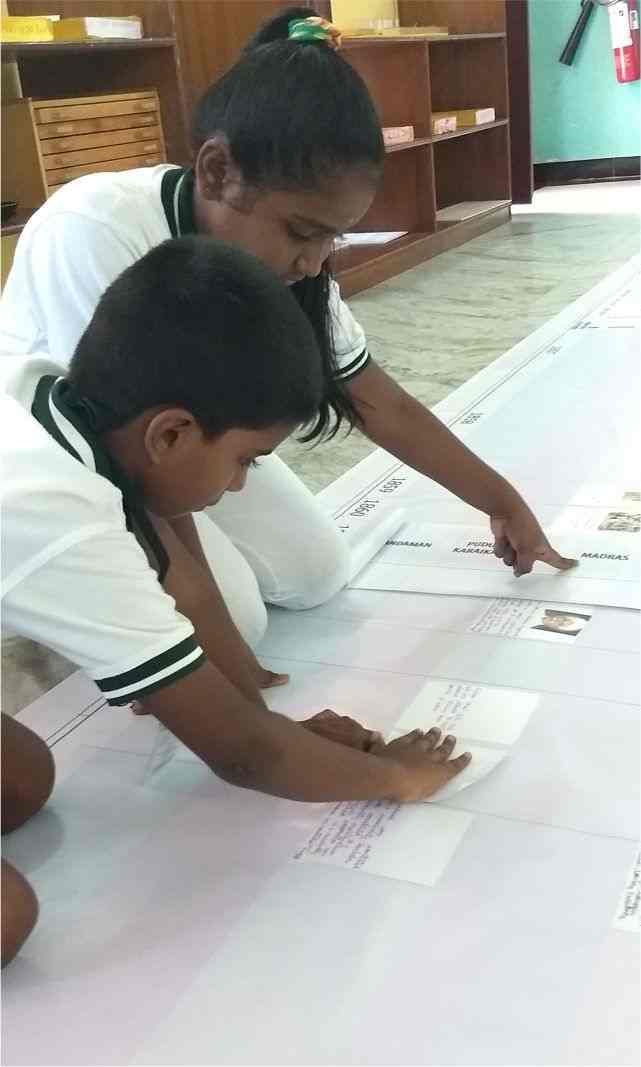
In Montessori Elementary, the school day has two long,
uninterrupted work periods usually three hours in the morning (8:30 am to 11:30 am) and
two hours (1 pm – 3 pm) in the afternoon.
Here’s what happens during this time:
Lessons: Children receive lessons from their teachers (see below).
Practice: Children are able to apply what they learned that day and week, and practice new skills. They practice at school instead of needing to bring their practice home as lots of homework. While practicing, they have access to resources to help them when they get lost or stuck peers, older students, and their teachers.
Projects: Children are able to tackle and work on projects they initiate such as research on a country, follow-up work on a historical period they study, science experiments they can conduct, or longer creative writing projects they become engaged in.
Community work: Children take an active role in ensuring their community functions taking care of their environment (e.g., watering plants, putting materials back), leading group meetings, and keeping themselves organized (e.g., updating their work journals).
Self Directed Learning: Instead of moving in lock-step, at adult direction, from one subject to the next every 50 minutes, Montessori children have the opportunity to engage deeply, to practice until they achieve mastery, and to experience the power of making autonomous choices, instead of needing to obey adult direction throughout the day.
Small-group or One-on-one Lessons
Individualized learning at each child’s pace, tailored to interests and talents
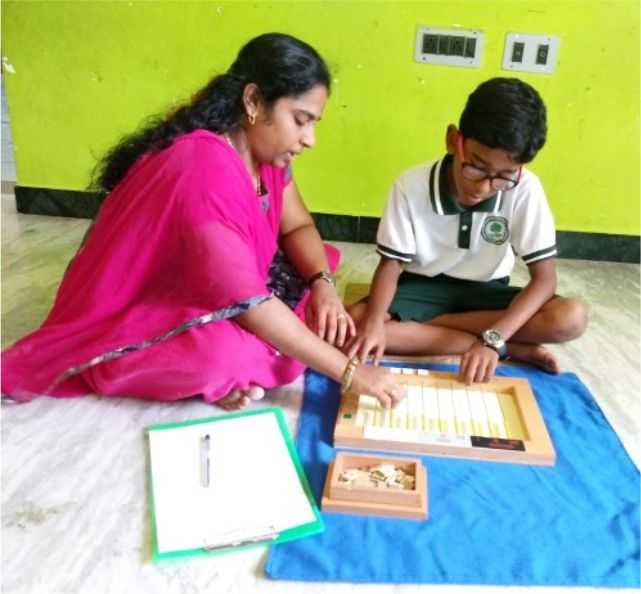
During the extended work periods, teachers give lessons to children, sometimes to the whole class, but more often in small groups or one-on-one. In this way, a Montessori elementary teacher can teach just to the level that a child or a small group of children are ready for instead of some children becoming bored, or others struggling to keep up when most lessons are given to an entire class of 20+ children. She can also verify understanding and each child is more likely to be engaged, because the material meets their needs, and because it is hard to hide in a small group. Groups are put together based on interest, previous knowledge, and talent. For example, a math group may include an advanced 4th grader, several 5th graders, and maybe a sixth grader or two who need a refresher on that particular lesson.
A Carefully Prepared, Inviting, Beautiful Environment
Materials, work spaces, and organizational tools
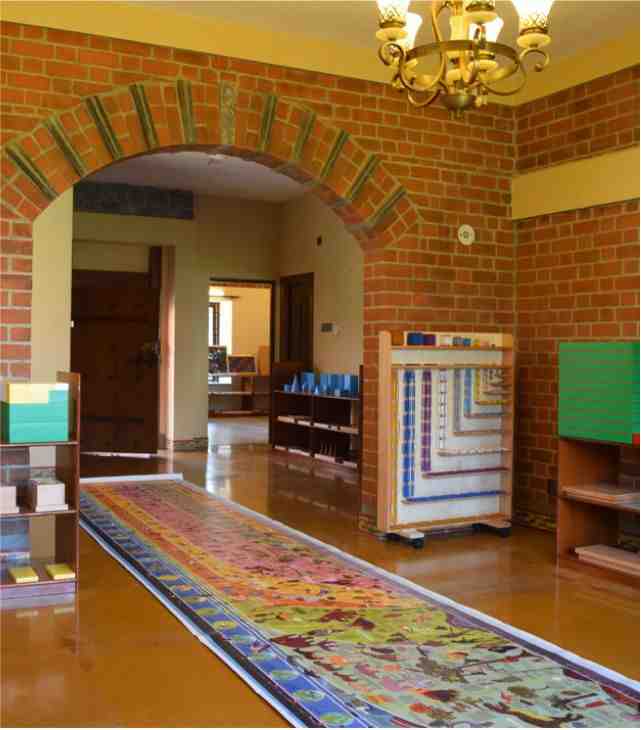
We all do our best work in a beautiful environment, one that meets our needs. Many elementary age children struggle to sit still at a desk for hours at a time. Children need to move to think and do their best work! Dr. Montessori recognized that which is why in our classrooms, children can work at a child-sized table (alone or with 2-3 others), or on a rug on the floor, or curled up on a beanbag or a small rocking chair while reading a book. Children are trusted to move about the classroom and attend to their needs (a glass of water, a restroom break, a mid-morning snack)instead of needing to ask a teacher permission to get up. Shelves, plants, rugs, and worktables define work spaces, where small groups and individuals can work comfortably instead of the rows of desks common in traditional schools. Beautiful materials, plants, flowers, art and even music playing quietly make a Montessori elementary room a peaceful and inviting work environment.
Freedom within Limits
Responsibility and agency supported by careful scaffolding support authentic motivation
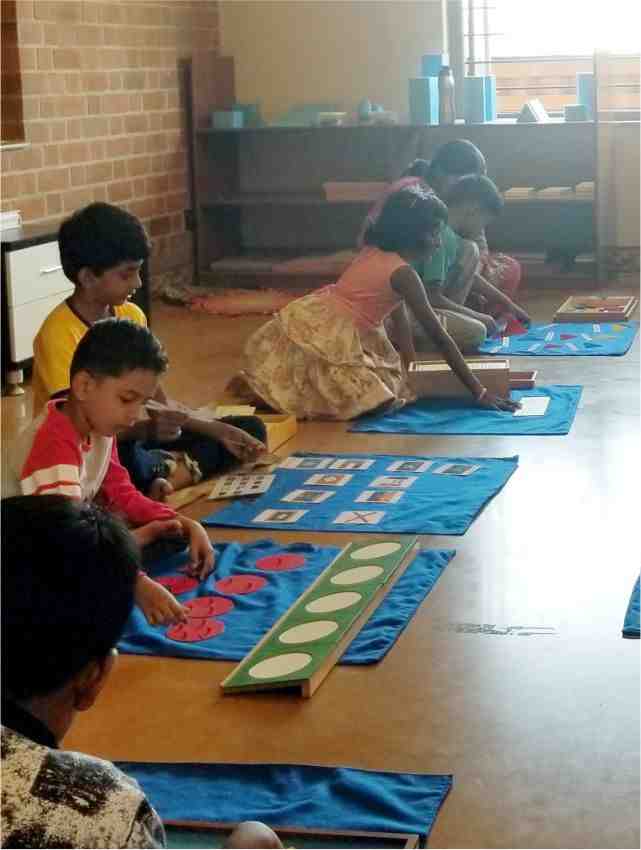
Montessori believes that in the right environment, children
are eager to learn, and want to do well. As Montessori educators, we believe it is not our
role to micro-manage children, but to provide just the right amount of scaffolding and
support they need to do their best work, and to be their best selves. We call this approach
freedom within limits: it is an approach founded in trust and respect, rather than control
and command.
Here are a few ways it plays out in class:
Supporting time and work management:Children receive differing levels of support in managing their work, depending on their maturity and responsibility. A young, impulsive child may need to check in with a teacher every 30 minutes or after every completed activity while a mature planner may have a weekly meeting to plan out work, and then be trusted to carry out the plan all week long until the next weekly meeting.
Supporting responsible choices: Teachers give children freedom as they see them be responsible. A child who is easily distracted may be assigned to a workspace in a quiet corner to practice math while another child who has shown his ability to make good choices may be free to work anywhere, maybe even including taking his work out to a picnic table outside with his work partner.
Get in Touch with Us
Our Headquarters are in Chennai and Puducherry
27-28, 2nd Cross
Moogambigai Nagar
Reddiarpalayam, Pondy - 605 010
Phone: +91 9994851951
Phone: +91 9361919996
Email: contact@vrukshamontessori.com
24-25, 12th Cross
Ranga Reddy Gardens
Neelankarai, Chennai - 600 041
Phone: +91 9994851951
Phone: +91 9361919996
Email: contact@vrukshamontessori.com
We are social
Click For
Contact Us





